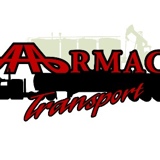Information
-
Document No.
-
Conducted on
-
Prepared by
-
Location
-
Asset ID
HARNESS IDENTIFICATION
-
Harness Manufacturer
-
Harness Model
-
Harness Serial Number
-
Date of Manufacture
-
Lanyard Manufacturer
-
Lanyard Model
-
Lanyard Serial Number
-
Date of Manufacturer
HARDWARE HARNESS
-
D-rings<br>Check D-rings for rust or corrosion, distortion, cracks, breaks, and rough or sharp edges. D-rings should pivot freely.
-
Buckles<br>note any unusual wear, damage or distortion. On tongue buckles check that the roller and tongue move freely and that the tongue overlaps the buckle frame. Check the outer and centre bars on friction and mating buckles for distortion. On quick release types check for broken plastic and that they will not release when one release is opened. Mating buckles should nest together.
WEBBING HARNESS
-
Webbing<br>Inspect the entire length of all the webbing looking for frayed edges, broken fibres, pulled stitches, cuts, burns and chemical damage. Also look for mildew, discoloration, hard shiny spots, any webbing that has been marked with a felt pen, excessive hardness or brittleness or the Harness Fall Indicator deployment.
-
Stitching <br>Check all stitching for ripped or pulled stitches and to make sure the webbing joints are not loose. Also look for missing stitching, hard or shiny spots, or discoloration of stitching.
LABELS HARNESS
-
Inspect to be certain that all harnesses have a label that is legible and securely held in place.
OVERALL DISPOSITION HARNESS
-
Harness is approved for use at time of inspection.
-
Harness is NOT approved for further use and must be removed from service.
HARDWARE LANYARD
-
Buckles<br>note any unusual wear, damage or distortion. On tongue buckles check that the roller and tongue move freely and that the tongue overlaps the buckle frame. Check the outer and centre bars on friction and mating buckles for distortion. On quick release types check for broken plastic and that they will not release when one release is opened. Mating buckles should nest together.
WEBBING LANYARD
-
Webbing<br>Inspect the entire length of all the webbing looking for frayed edges, broken fibres, pulled stitches, cuts, burns and chemical damage. Also look for mildew, discoloration, hard shiny spots, any webbing that has been marked with a felt pen, excessive hardness or brittleness or the Harness Fall Indicator deployment.
-
Stitching <br>Check all stitching for ripped or pulled stitches and to make sure the webbing joints are not loose. Also look for missing stitching, hard or shiny spots, or discoloration of stitching.
-
LABELS LANYARD
-
Inspect to be certain that all harnesses have a label that is legible and securely held in place.
OVERALL DISPOSITION LANYARD
-
Lanyard is approved for use at time of inspection.
-
Lanyard is NOT approved for further use and must be removed from service.









